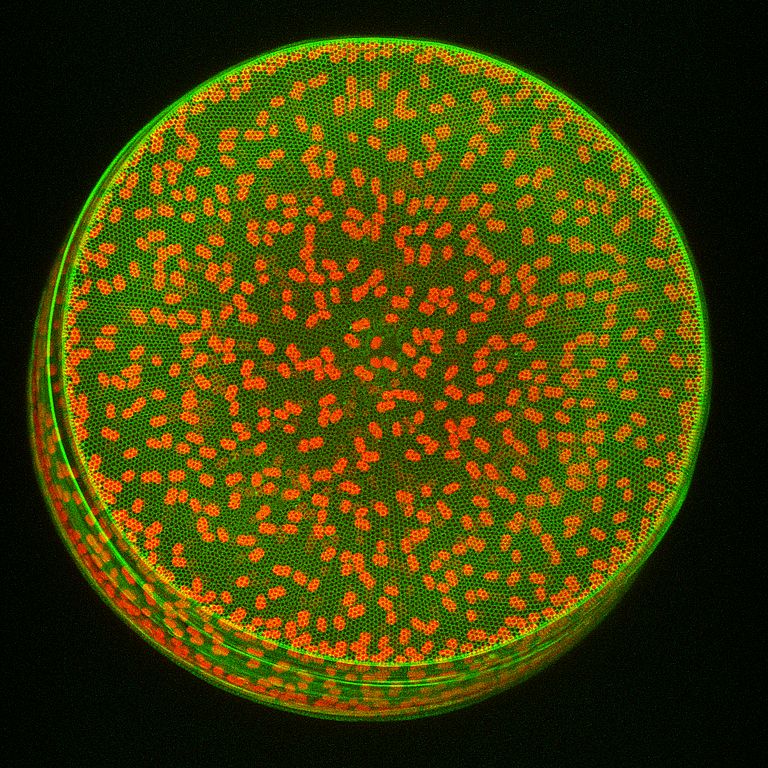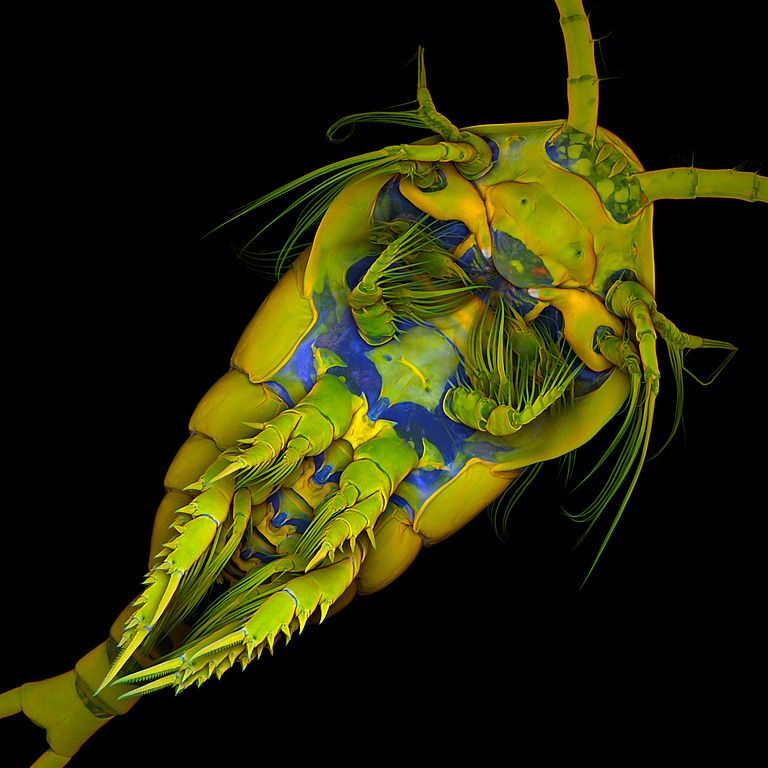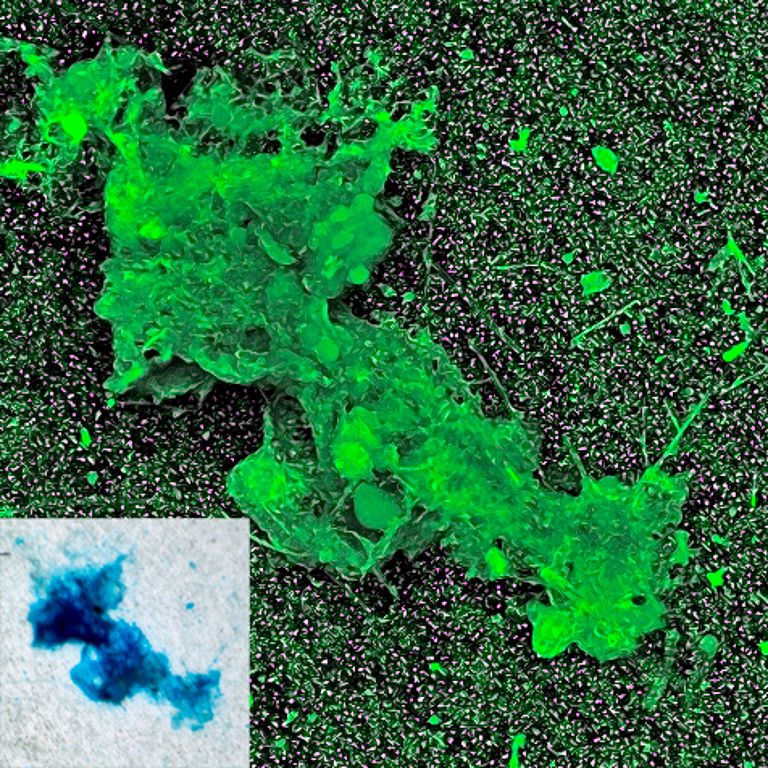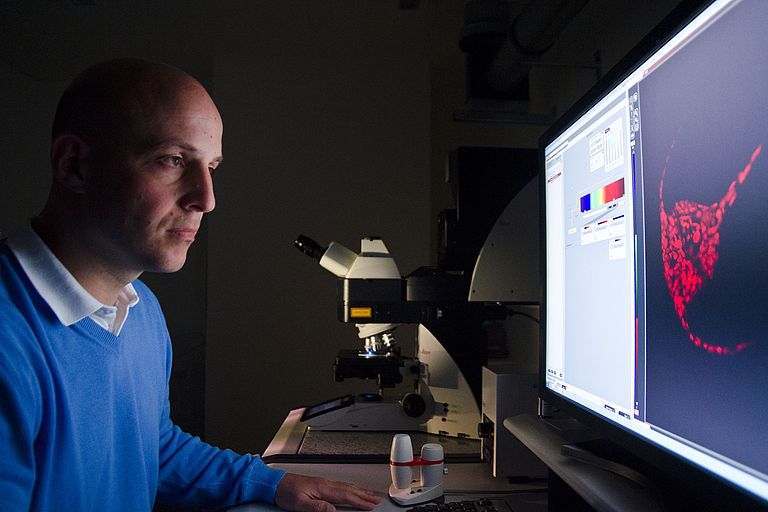New insights into the marine microcosm
Confocal laser scanning microscope expands GEOMAR’s analytical infrastructure
Although many of them are so tiny that they cannot be recognized with the naked eye, organic particles and small organisms such as bacteria, unicellular algae and copepods play important roles in the marine food webs and in the global oxygen and carbon cycles. In order to understand, in detail, their significance for particle and energy fluxes in the oceans, it is often necessary to analyze the organic particles and the organisms with high-resolution microscopy techniques. At GEOMAR Helmholtz Centre for Ocean Research Kiel a new well-equipped confocal laser scanning microscope enabling three-dimensional visualizations of the structures of interest with a resolution of a few hundred nanometers is now applied for such analyses. “The application of this microscope will provide new insights into the marine microcosm,” explains Professor Dr. Anja Engel, head of the research division “Marine Biogeochemistry” at GEOMAR.
The new € 200,000 microscope could be purchased with a grant for excellent female scientists conferred to Professor Engel by the Helmholtz Association. It will mainly be used to analyze so-called gel particles, which form from dissolved organic matter and play an important role in the organic carbon cycle of the oceans. “The knowledge of their composition and biological availability is rather scarce,” says Professor Engel and adds, “This microscope will allow us to directly investigate the structure, the biochemical composition and the microbial colonization of single gel particles.”
A confocal laser scanning microscope produces sharp and detailed micrographs of optical sections through the samples. “Based on a series of micrographs of optical sections through different layers of the samples we can create precise three-dimensional visualizations,” explains Dr. Jan Michels, a marine biologist who is responsible for the supervision and the application of the new instrument. Before he became member of the working group of Professor Engel, Dr. Michels had already gained in-depth experience in the visualization of marine organisms with different microscopy techniques at the Alfred Wegener Institute for Polar and Marine Research in Bremerhaven and at the Institute of Zoology in Kiel.
Besides the investigation of gel particles, in the future, the new microscope will also enable the study of a large variety of other scientific questions related to the marine microcosm. “The more information we get about marine microorganisms, the more we realize how important they are for the climate and the health of the oceans and, therefore, also for us,” emphasizes Professor Engel.
Photos:
Confocal laser scanning micrograph showing the frustule (green) and the chloroplasts (red) of a diatom of the species Coscinodiscus wailesii. The length of the image edge corresponds to 300 µm. Photo: J. Michels, GEOMAR
Confocal laser scanning micrograph showing the ventral side of a female copepod of the species Temora longicornis. The length of the image edge corresponds to 1.28 mm. Photo: J. Michels, GEOMAR
Gel particle formed in water from the Kiel Fjord, visualized using confocal laser scan-ning microscopy (large micrograph) and conventional bright-field microscopy (small micrograph). The sugar compounds in the gel particle were stained with a blue dye (small micrograph) and a fluorescent dye (large micrograph, green). The length of the edge of the large image corresponds to 160 µm. Photo: J. Michels, GEOMAR
Dr. Jan Michels working on the new confocal laser scanning microscope. Photo: J. Steffen, GEOMAR
Contact:
Jan Steffen (Communication & Media), Phone: +49-431 600 2811, presse(at)geomar.de jsteffen(at)geomar.de






